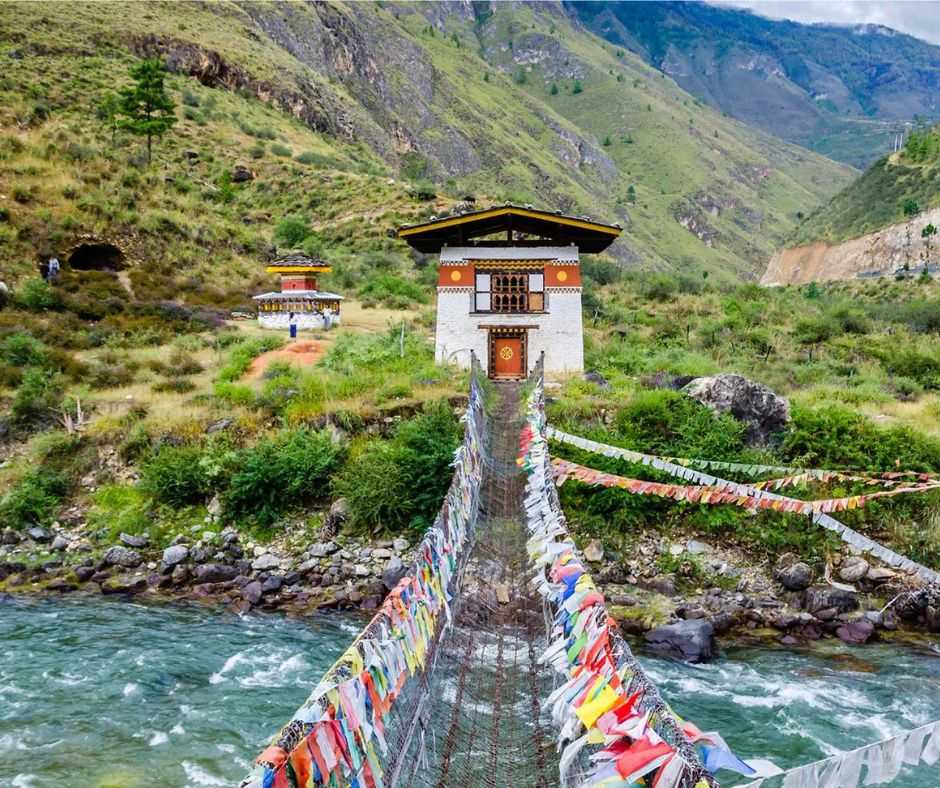Exploring the Mystical Kingdom of Bhutan
Welcome to the mystical kingdom of Bhutan, a small country nestled in the Himalayas that is often referred to as the Land of the Thunder Dragon. Bhutan offers an unparalleled travel experience where stunning natural beauty meets rich cultural heritage. From picturesque landscapes and unique architecture to vibrant traditions and warm hospitality, this hidden gem has something for everyone. Join us on a journey through Bhutan's mesmerizing culture, religion, nature, and wildlife as we explore its many wonders. Get ready to be enchanted by this magical kingdom!
Bhutan: Land of the Thunder Dragon
Bhutan, a small country nestled in the eastern Himalayas, is known as the Land of the Thunder Dragon. The name comes from Druk-yul, which means "the land of the thunder dragon" in Bhutanese language. This mythical creature plays an important role in Bhutan's culture and history.
The kingdom has preserved its unique identity by limiting tourism and protecting its environment. Visitors are required to pay a minimum daily tariff that includes accommodation, meals, transport, and a licensed guide to ensure responsible tourism practices. This policy ensures that visitors enjoy the country's natural and cultural heritage in a sustainable way. https://offbeatracks.com/
Bhutanese people take pride in their heritage and value happiness over material wealth. They follow Gross National Happiness (GNH), an indicator that measures citizens' well-being based on economic development, environmental conservation, cultural preservation, good governance, and community vitality.
Despite being one of the smallest countries in Asia with a population of around 750k people only; Bhutan boasts stunning landscapes ranging from snow-capped mountains to lush valleys dotted with monasteries and prayer flags fluttering in the wind.
Exploring this mystical kingdom will leave you mesmerized by its rich culture and traditions that have stood the test of time amidst modernization.
The People and Culture of Bhutan
The people of Bhutan are known for their hospitality and kindness. The country's unique culture is deeply rooted in the beliefs and values of Buddhism, which is practiced by the majority of the population.
One aspect that sets Bhutanese culture apart from other countries is its focus on Gross National Happiness (GNH), as opposed to Gross Domestic Product (GDP). This concept prioritizes the well-being and happiness of citizens over economic growth.
Bhutanese traditional clothing, called "kira" for women and "gho" for men, is still commonly worn today. These garments are often made from locally sourced materials such as silk or cotton and feature intricate designs reflecting regional differences.
Religious festivals, called "tsechus," play a significant role in Bhutanese culture. These events involve colorful dances performed by monks wearing masks depicting deities and historical figures. Tsechus attract locals as well as visitors from around the world who come to experience this unique cultural spectacle.
Bhutan's strong emphasis on preserving its distinct identity has led to a rich cultural heritage that continues to thrive today.
Religion in Bhutan
Religion plays a crucial role in the daily lives of Bhutanese people, and it is an essential aspect of their cultural identity. The official religion in Bhutan is Vajrayana Buddhism, which has been practiced in the country since the 7th century. It is believed that Guru Rinpoche (Padmasambhava) introduced Buddhism to Bhutan.
One of the most significant religious festivals in Bhutan is known as Tsechu, which takes place annually around different parts of the country. During this festival, locals dress up in colorful attire and perform masked dances called Cham. These dances are performed to honor Buddhist saints and deities while seeking blessings for good health and prosperity.
Another unique aspect of religion in Bhutan includes its reverence for nature and animals. The government enforces strict laws against hunting or harming any wildlife species as many believe they embody gods or goddesses.
Apart from Buddhism, there are small pockets of Christianity and Hinduism throughout Bhutan. However, these religions do not have official recognition from the government because they represent only a small minority compared to Vajrayana Buddhism.
Religion holds great significance within every aspect of life for locals living within this mystical kingdom – making it one of its defining features!
The Architecture of Bhutan
The architecture of Bhutan is unique and distinctive, reflecting the country's rich cultural heritage. Traditional Bhutanese buildings are typically constructed using wood, stone, and mud bricks.
One of the most striking features of Bhutanese architecture is its use of bright colors and intricate designs. Many buildings are decorated with colorful paintings depicting Buddhist deities, dragons, and other symbols from Bhutanese mythology.
Another important aspect of Bhutanese architecture is its incorporation of traditional building techniques. For example, many buildings are constructed without nails or screws - instead relying on interlocking wooden beams to hold them together.
Perhaps one of the most famous examples of Bhutanese architecture is the Taktshang Monastery (also known as Tiger's Nest), which was built into a cliff face over 3000 meters above sea level. This stunning feat of engineering has become one of the most popular tourist attractions in all of Bhutan.
The unique architectural style found throughout Bhutan reflects both the country's deep spiritual traditions and its commitment to preserving its cultural heritage for future generations.
Nature and Wildlife in Bhutan
Bhutan is a land of pristine natural beauty, with over 70% of its territory covered in forests. The country's diverse topography and climate create unique habitats for a variety of wildlife species.
One such animal that has become synonymous with Bhutan is the majestic snow leopard. Found at elevations above 3,000 meters, these elusive creatures are notoriously difficult to spot but are crucial to maintaining the ecological balance of their ecosystem.
The Royal Manas National Park in southern Bhutan is home to an incredible range of flora and fauna, including Asian elephants, Bengal tigers, clouded leopards, and over 450 species of birds. Visitors can take guided treks through the park to explore its extensive network of trails and immerse themselves in nature.
In addition to national parks like Royal Manas, Bhutan also boasts several conservation areas dedicated to preserving endangered species such as black-necked cranes and white-bellied herons.
For those interested in botany or horticulture, there are several botanical gardens throughout Bhutan showcasing native plant species like rhododendrons and primulas.
Bhutan offers visitors a unique opportunity to experience firsthand some truly remarkable examples of biodiversity on our planet.
Conclusion
To sum it up, Bhutan is truly a mystical kingdom that offers visitors an unforgettable experience. The country's unique culture and traditions, stunning natural scenery, and friendly locals make it a must-visit destination for anyone seeking adventure or spiritual enlightenment.
Whether you're exploring the ancient monasteries and temples of Paro and Thimphu, hiking through the breathtaking landscapes of Punakha or Bumthang, or simply immersing yourself in the local way of life by sampling delicious Bhutanese cuisine and attending colorful festivals like Tsechu - there is something for everyone in this enchanted land.
So why not plan your next vacation to Bhutan? Explore its hidden treasures, immerse yourself in its captivating culture, and discover what makes it one of the most extraordinary places on earth. It will surely be an experience unlike any other!
#travel
#[63900]
#[63901]
#[63902] bhutan








